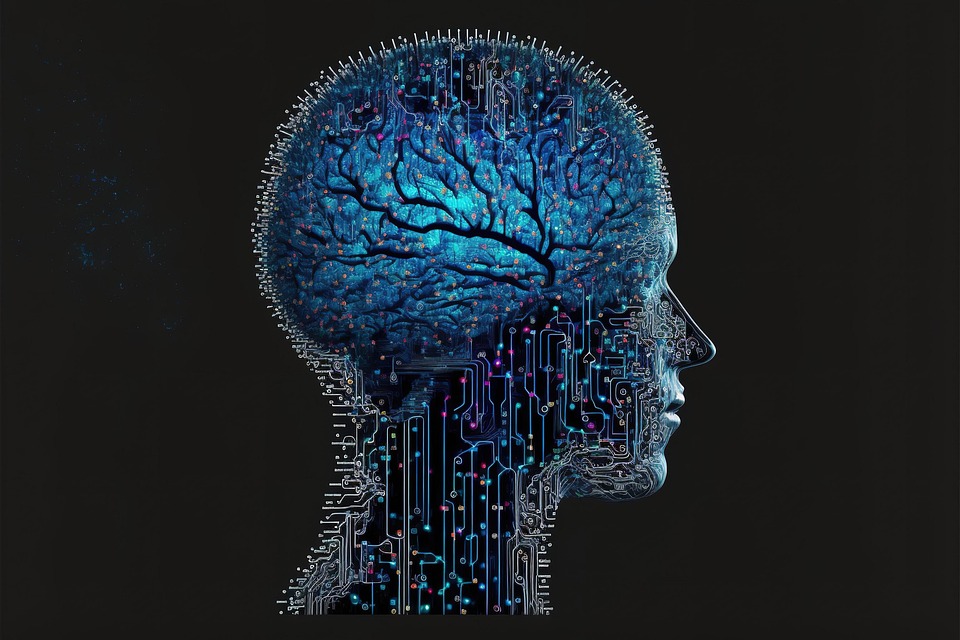to Brain-Computer Interfaces: Bridging the Gap Between Mind and Machine

In a world where technology is rapidly advancing, the concept of brain-computer interfaces (BCIs) stands out as one of the most intriguing and promising innovations. Imagine a future where humans can control machines with their thoughts, enhance cognitive functions, and even overcome physical disabilities.
This is no longer a distant dream but a reality being shaped by scientists and researchers worldwide.
Understanding Brain-Computer Interfaces
At its core, a brain-computer interface is a system that establishes a direct communication pathway between a human brain and an external device. BCIs work by capturing brain signals, interpreting them, and translating them into commands that can control computers, prosthetics, or other devices.
This technology holds immense potential for various applications, ranging from medical rehabilitation to enhancing everyday life.
The Science Behind BCIs
Brain-computer interfaces rely on capturing and interpreting electrical signals produced by brain activity. Electroencephalography (EEG) is one of the most common methods used to collect these signals non-invasively.
EEG involves placing electrodes on the scalp to detect brain waves, which are then processed to understand the user’s intentions. Advances in neuroimaging and machine learning have significantly improved the accuracy and efficiency of signal interpretation.
Applications of BCIs
BCIs have the potential to revolutionize numerous fields, particularly healthcare. For individuals with severe disabilities, BCIs offer a means of communication and control over their environment. For example, patients with locked-in syndrome can use BCIs to communicate by selecting letters on a screen with their thoughts.
Additionally, BCIs are being explored for their potential to restore motor functions in paralyzed individuals by controlling robotic limbs or stimulating neural pathways.
Beyond healthcare, BCIs have exciting prospects in gaming and virtual reality, offering more immersive experiences by allowing users to control avatars with their minds. They also hold potential in security, where thought-based authentication could enhance cybersecurity measures.
Current Developments in Brain-Computer Interfaces
The field of brain-computer interfaces is rapidly evolving, with significant strides being made in both research and commercial applications. Companies like Neuralink, founded by Elon Musk, are at the forefront of developing implantable BCIs, aiming to create seamless integration between humans and technology.
Neuralink and the Quest for Advanced BCIs
Neuralink’s approach involves implanting tiny electrodes in the brain to record and stimulate neural activity.
This invasive method promises higher precision and faster communication with external devices. The company envisions a future where BCIs can not only restore lost functions but also enhance human cognition and memory.
Non-Invasive BCIs: A Safer Alternative?
While invasive BCIs offer precise control, they come with significant risks and ethical concerns. As a result, researchers are also focusing on developing non-invasive alternatives.
Functional near-infrared spectroscopy (fNIRS) and magnetoencephalography (MEG) are emerging technologies that offer promising results without the need for surgical procedures.
Ethical Considerations: Navigating the Challenges
As with any groundbreaking technology, brain-computer interfaces present ethical dilemmas that must be addressed. The integration of BCIs into society raises questions about privacy, consent, and the potential for misuse.
Privacy and Data Security
BCIs involve collecting sensitive neural data, raising concerns about privacy and data security. Ensuring that this information remains confidential and protected from unauthorized access is paramount. Researchers and developers must implement robust security measures to safeguard users’ neural data.
Informed Consent and Autonomy
Obtaining informed consent is crucial when implementing BCIs, particularly in medical applications. Users must fully understand the risks and benefits of the technology. Additionally, preserving user autonomy is essential, ensuring that individuals retain control over their thoughts and actions.
The Risk of Cognitive Enhancement
As BCIs advance, the possibility of cognitive enhancement becomes more plausible. This raises ethical questions about fairness and equal access. If only a privileged few can afford cognitive enhancements, it could exacerbate existing social inequalities.
The Future of Brain-Computer Interfaces: Possibilities and Challenges
The potential of brain-computer interfaces is vast, but several challenges remain before they can be widely implemented. Technological advancements, regulatory frameworks, and public acceptance will play critical roles in shaping the future of BCIs.
Advancements on the Horizon
Researchers are continuously working on improving the efficiency, safety, and usability of BCIs. Advances in materials science, signal processing, and machine learning will drive the next generation of BCIs, making them more accessible and effective.
Regulatory and Ethical Guidelines
Establishing comprehensive regulatory and ethical guidelines is essential to ensure the responsible development and deployment of BCIs. Collaboration between scientists, ethicists, policymakers, and the public will be necessary to create frameworks that protect individuals while fostering innovation.
Public Perception and Acceptance
Public perception and acceptance of BCIs will significantly influence their integration into society. Educating the public about the benefits and risks of BCIs is crucial to dispel misconceptions and build trust in the technology.
Conclusion: Embracing the Potential of Brain-Computer Interfaces
Brain-computer interfaces represent a promising frontier in technology, offering unprecedented opportunities to enhance human capabilities and improve quality of life. While challenges remain, the potential benefits of BCIs cannot be overstated.
By addressing ethical concerns, ensuring security, and fostering public understanding, we can pave the way for a future where the boundaries between mind and machine are seamlessly integrated. As we stand on the brink of this technological revolution, the possibilities are limited only by our imagination.






